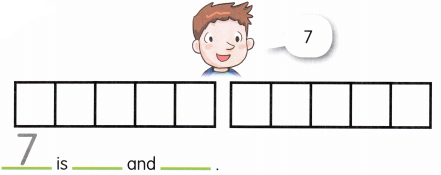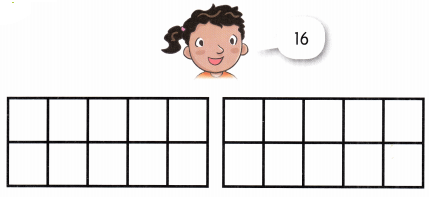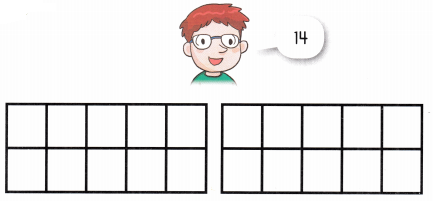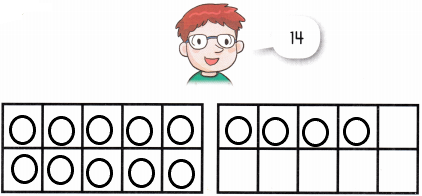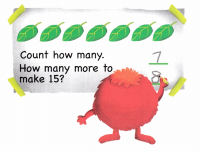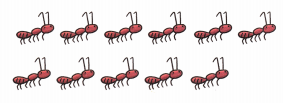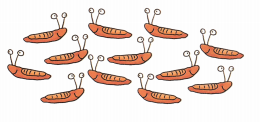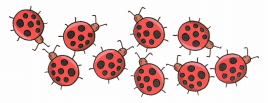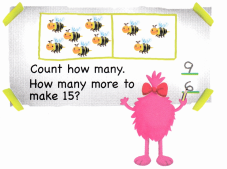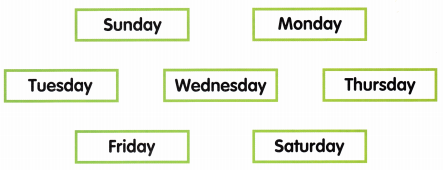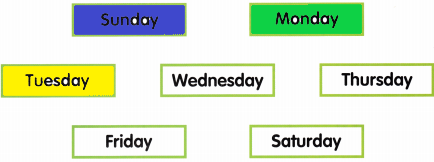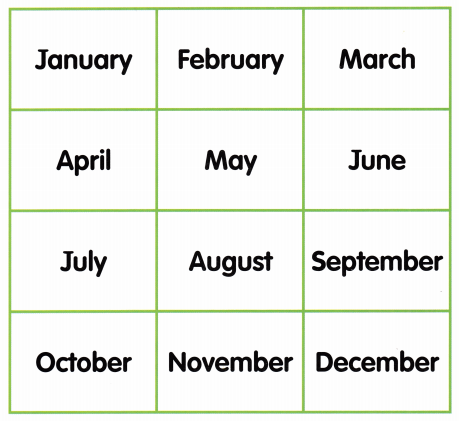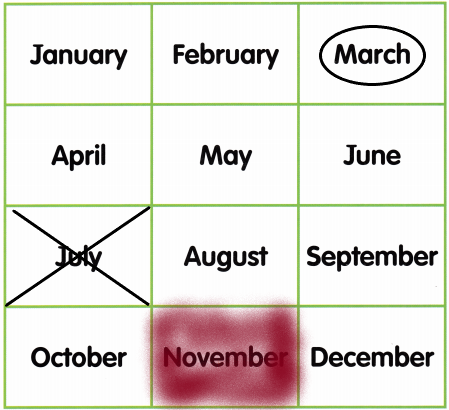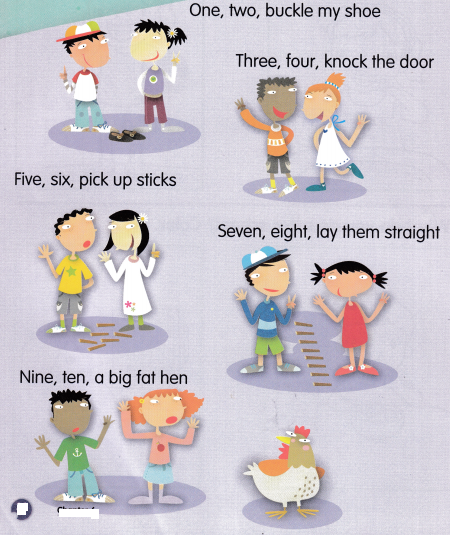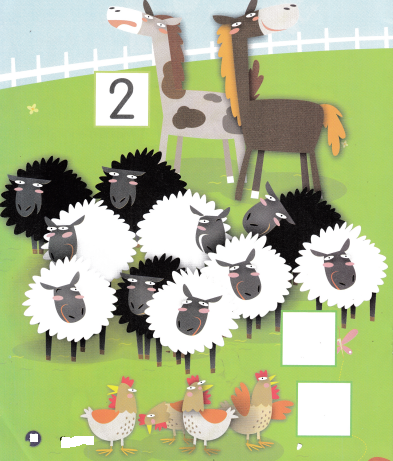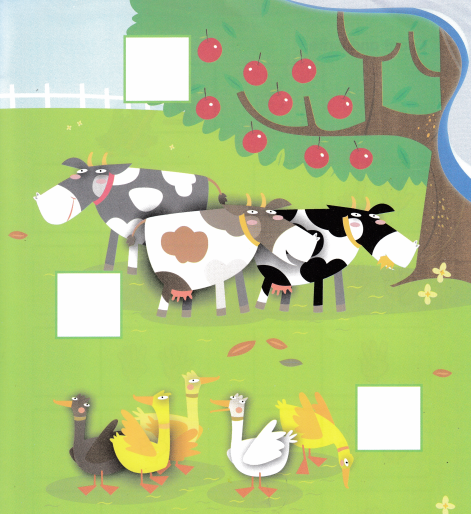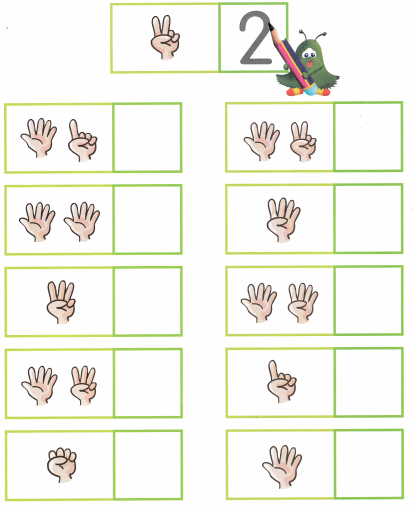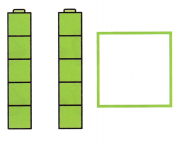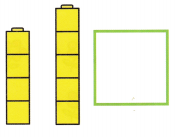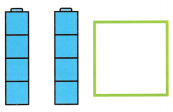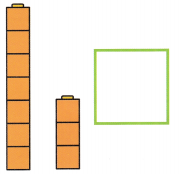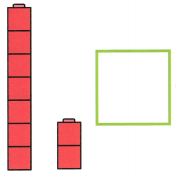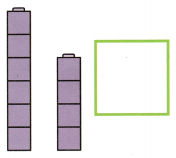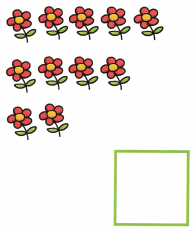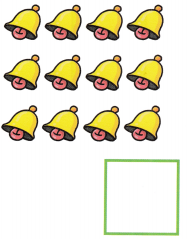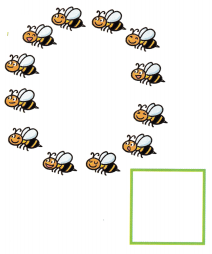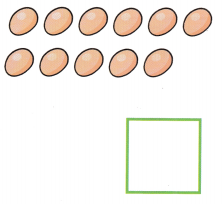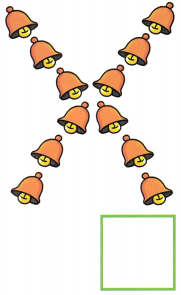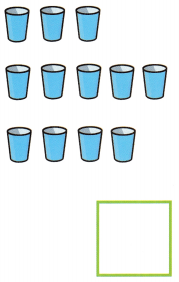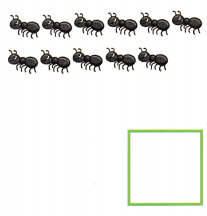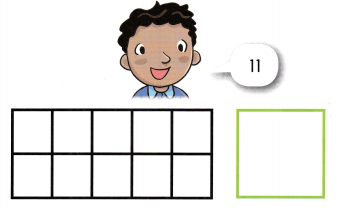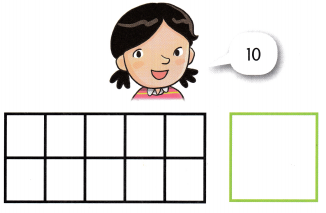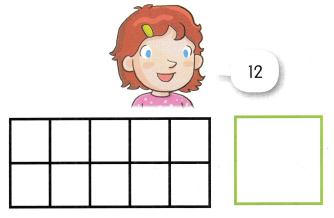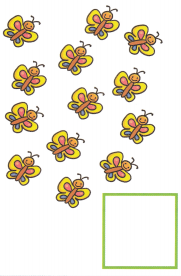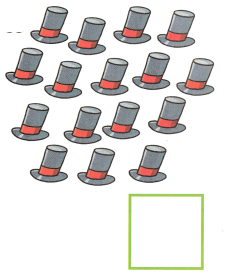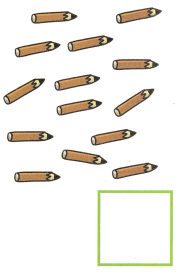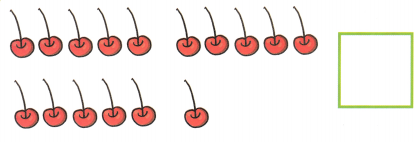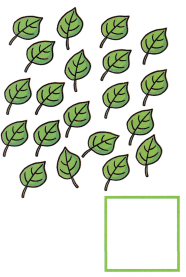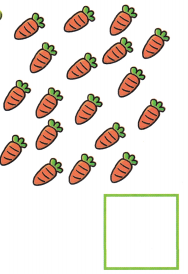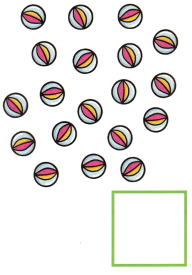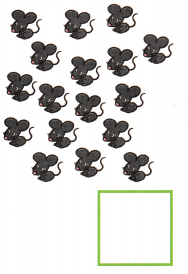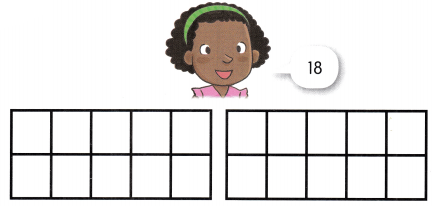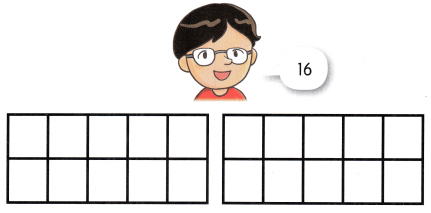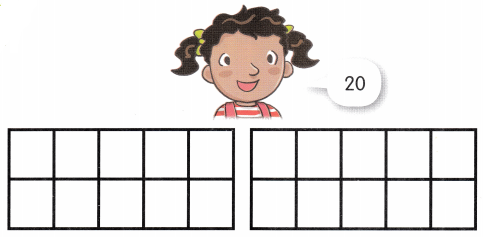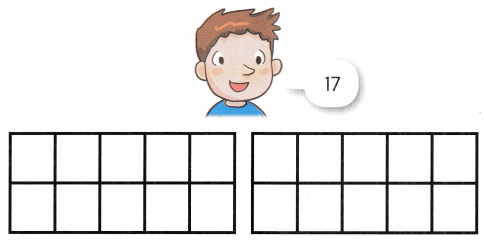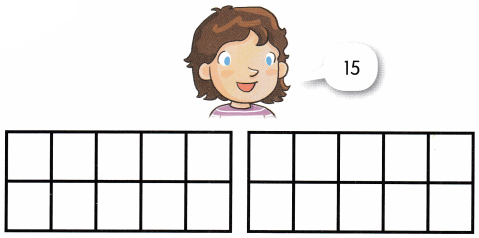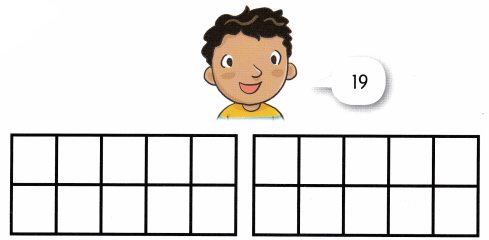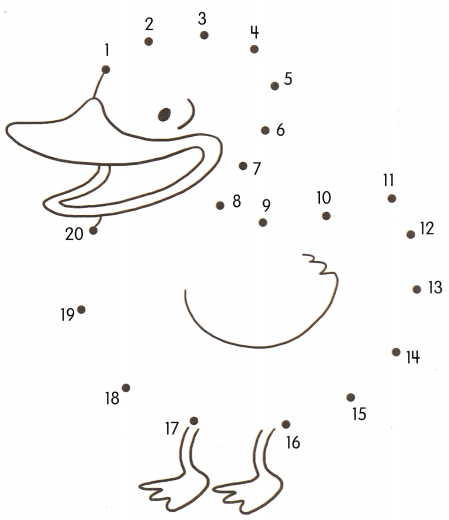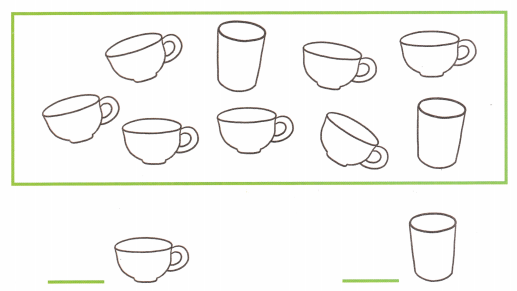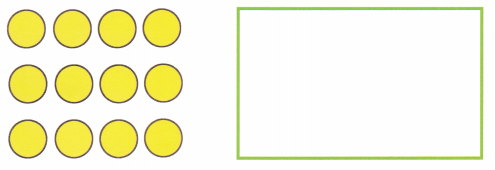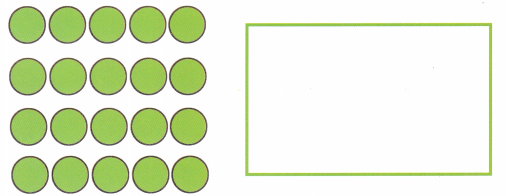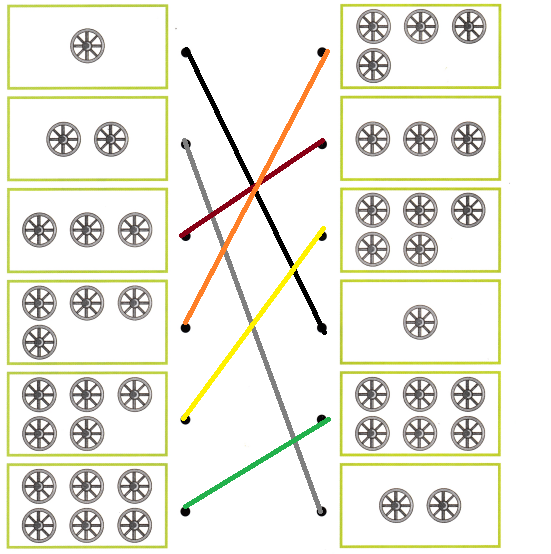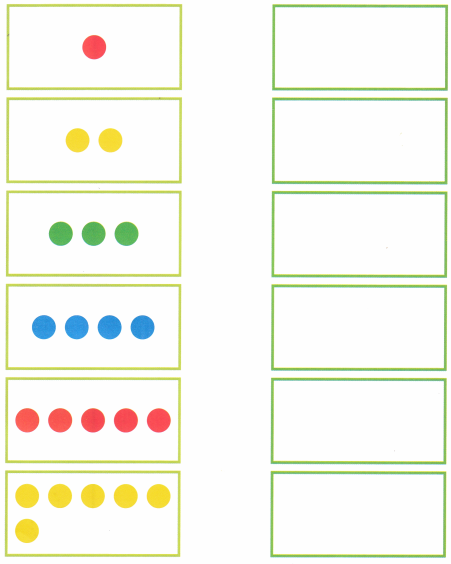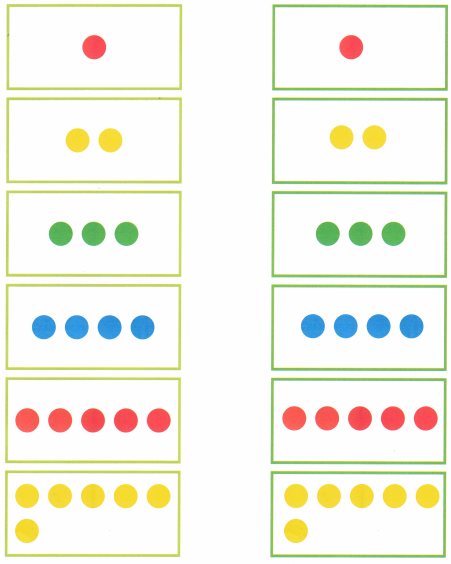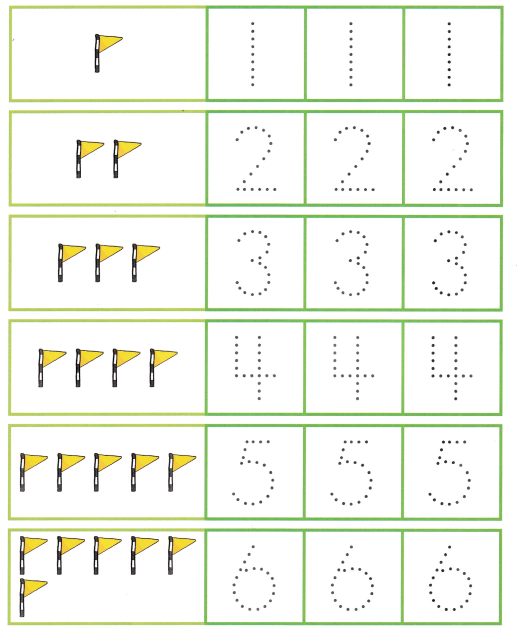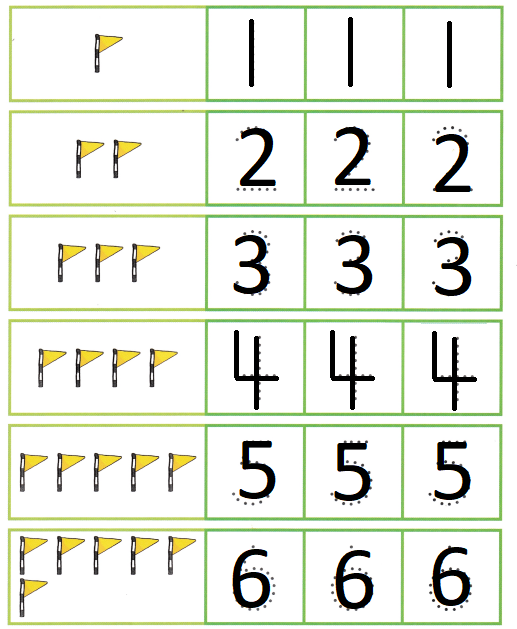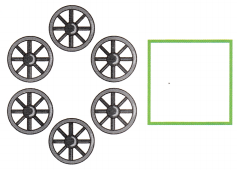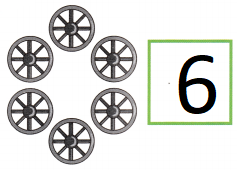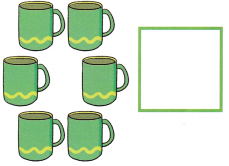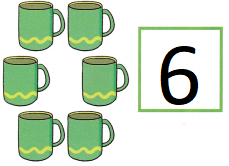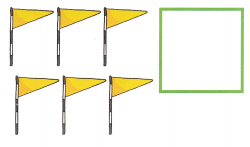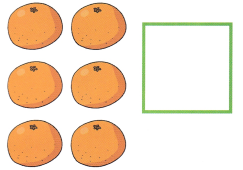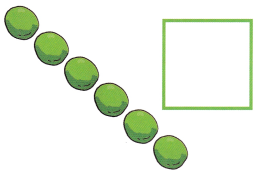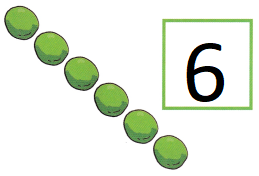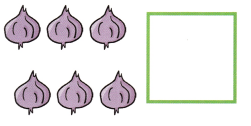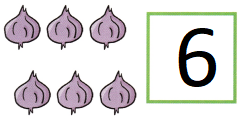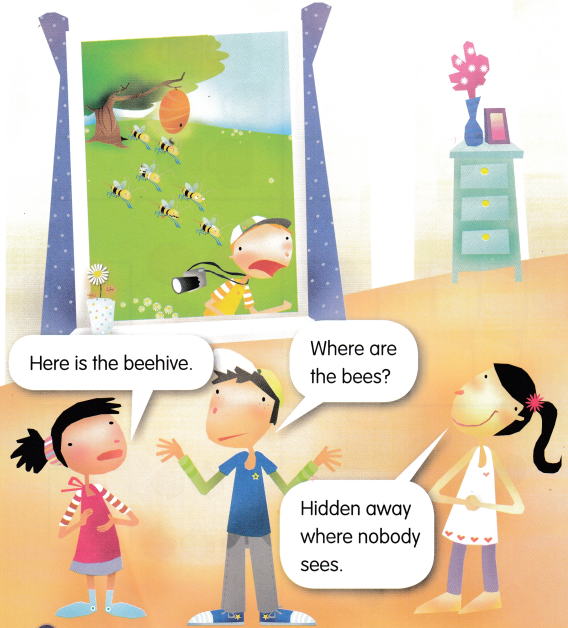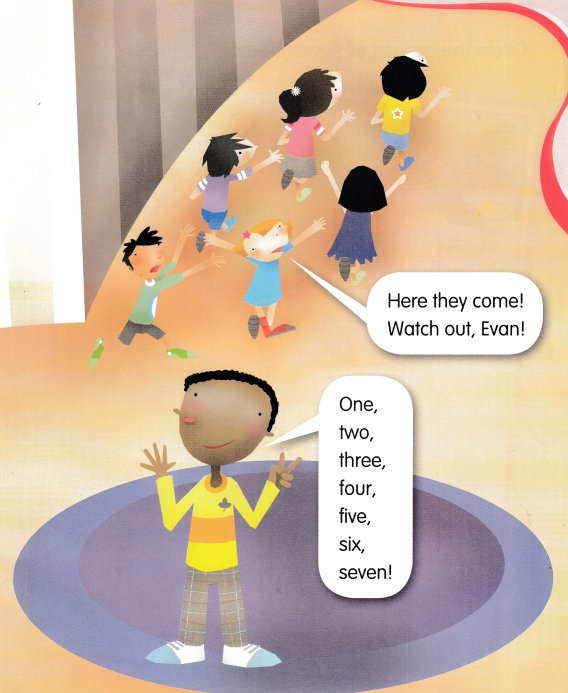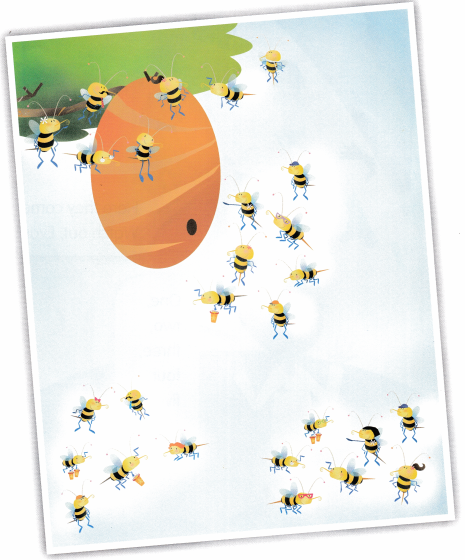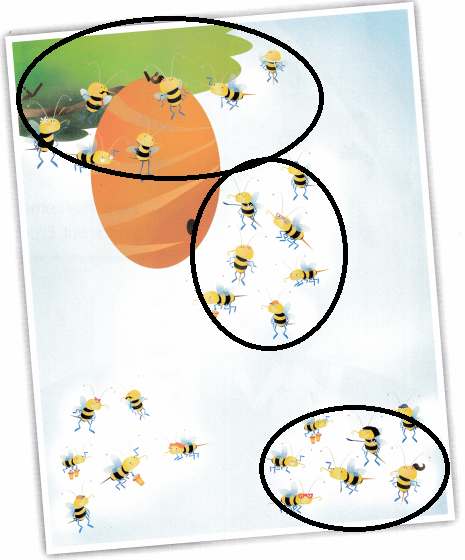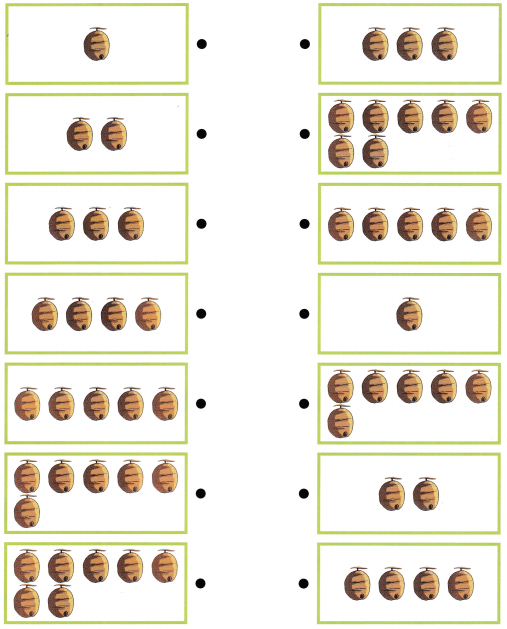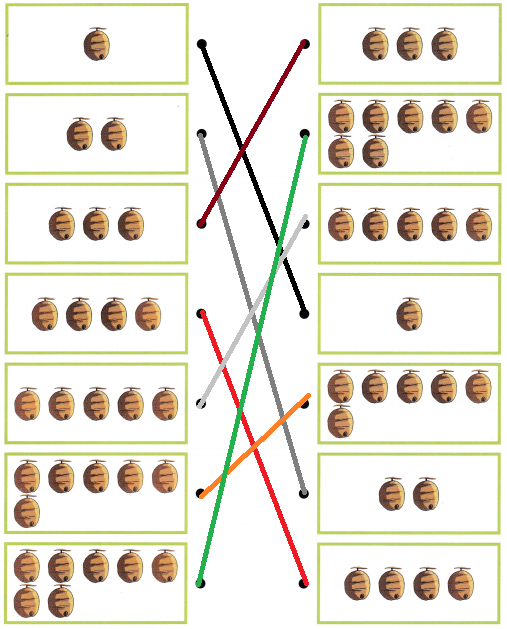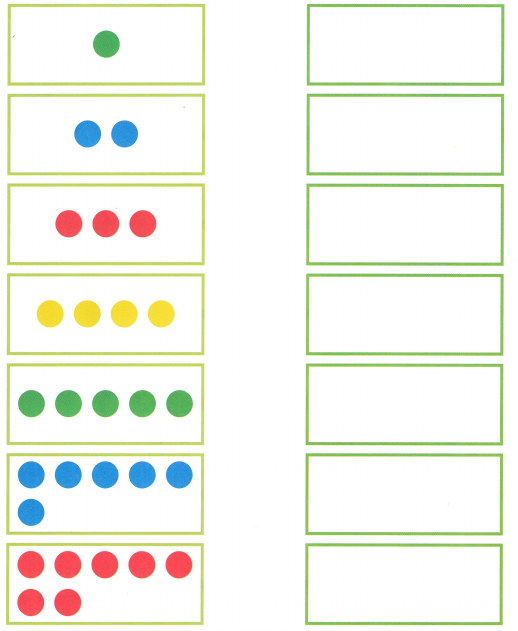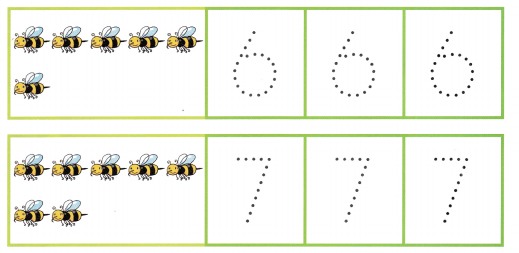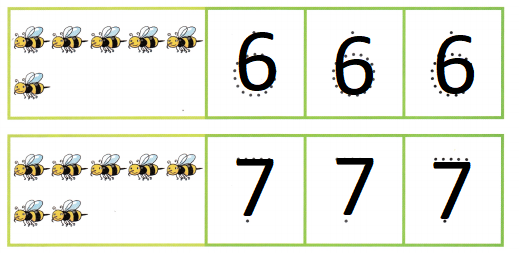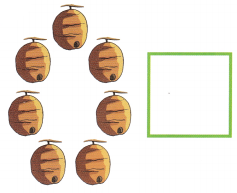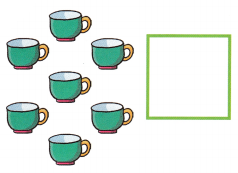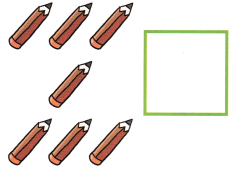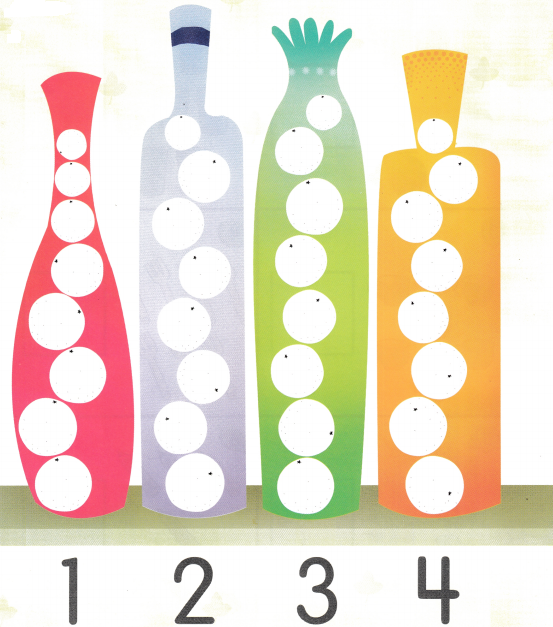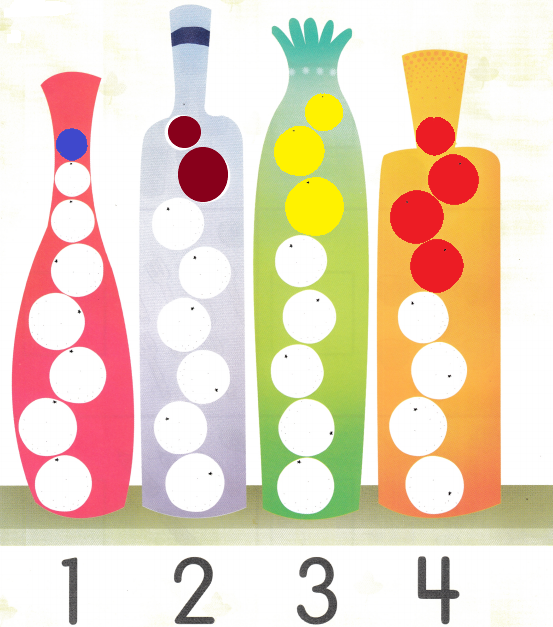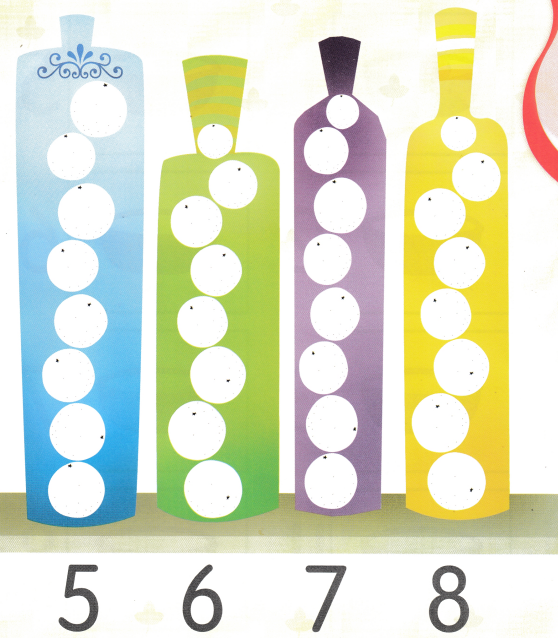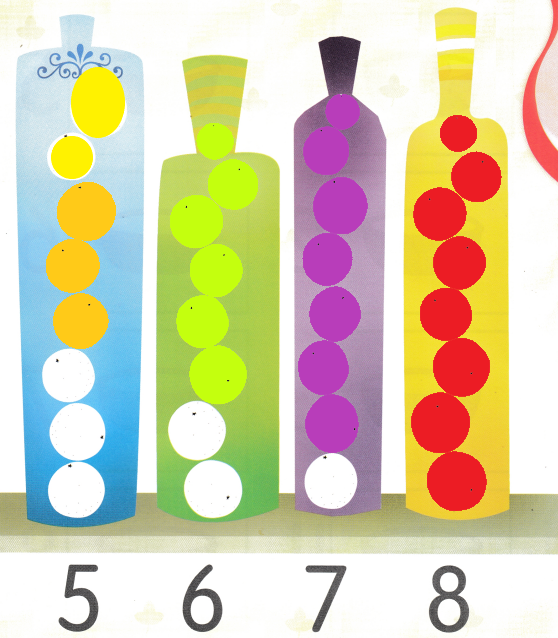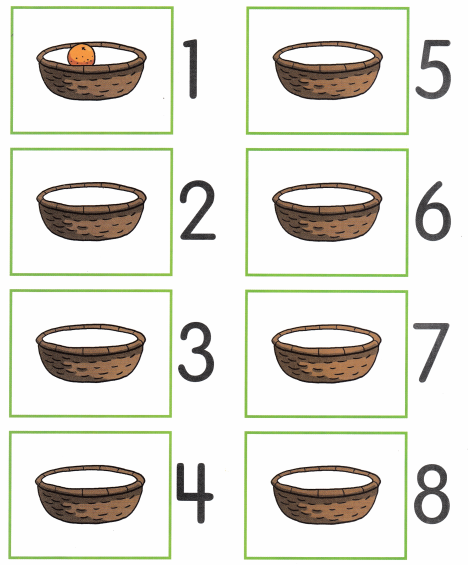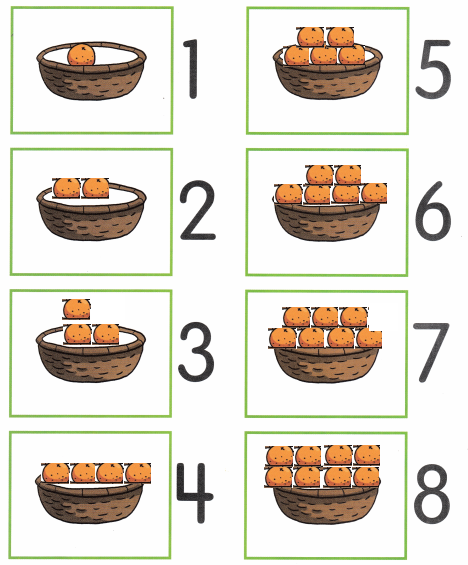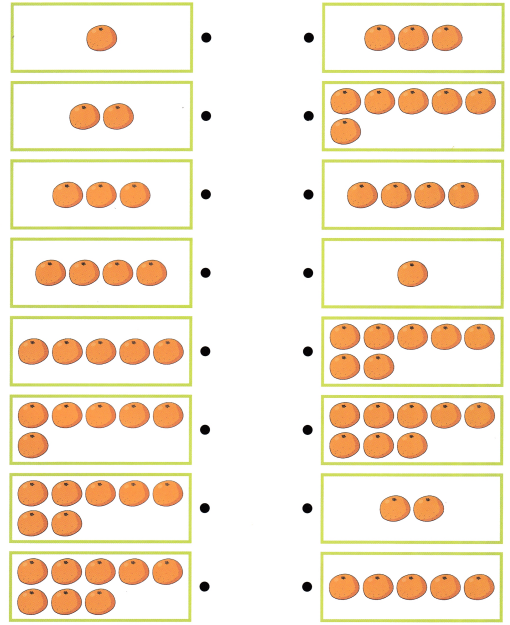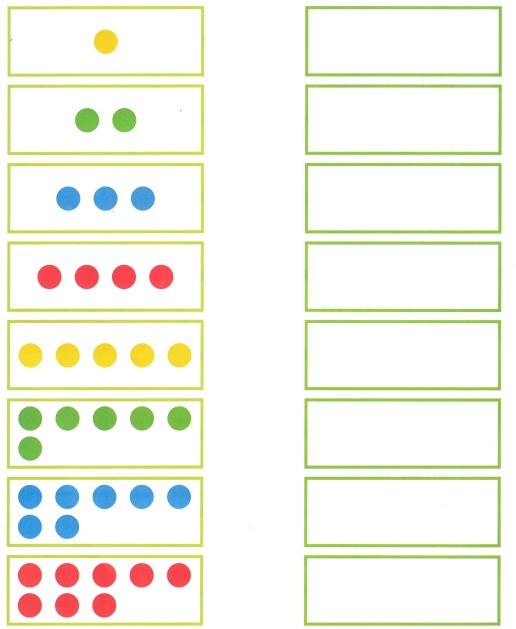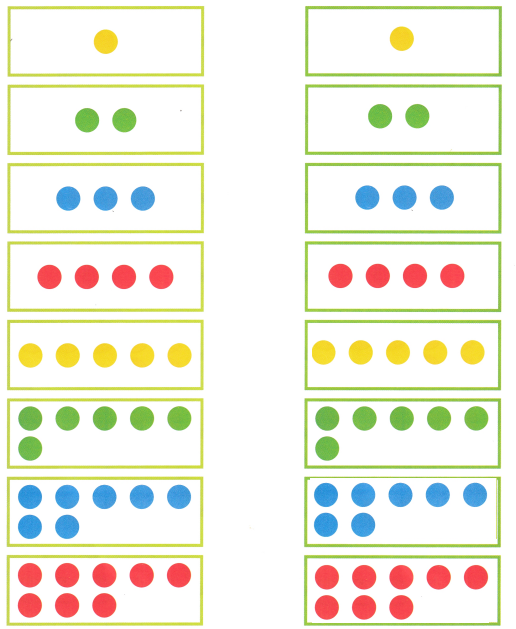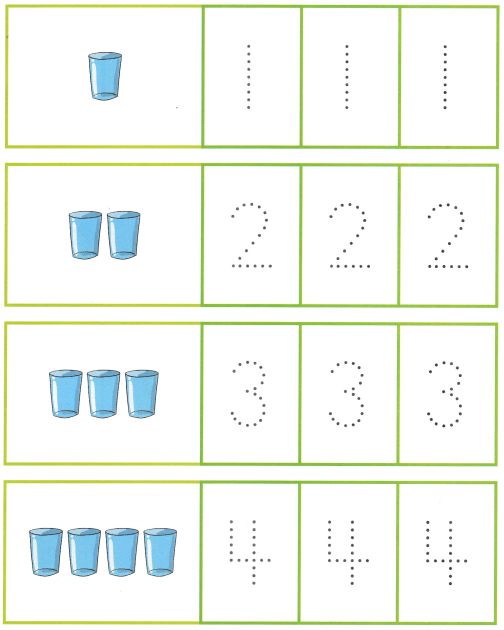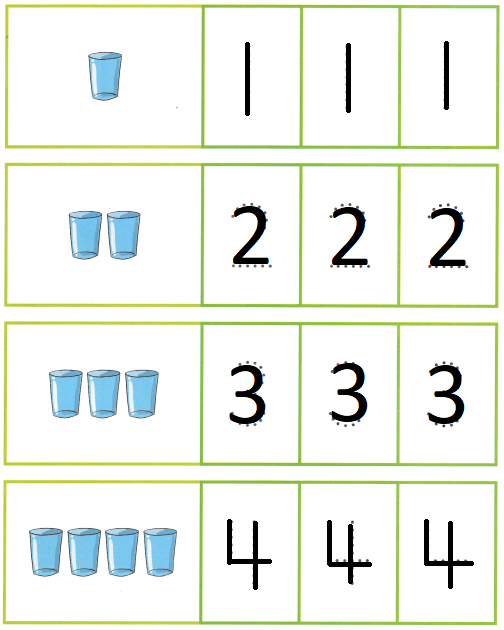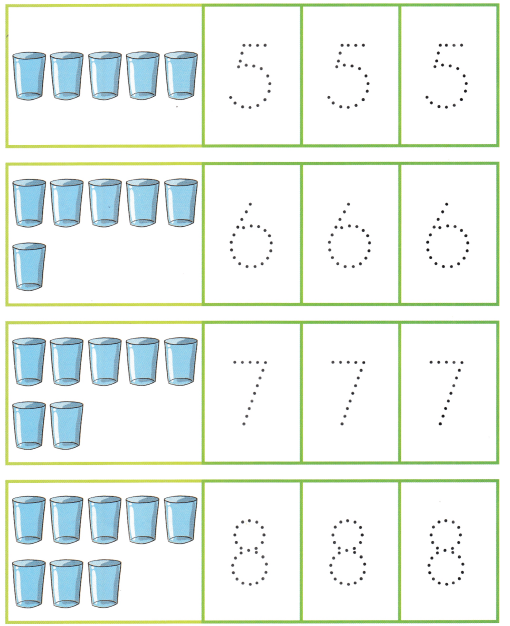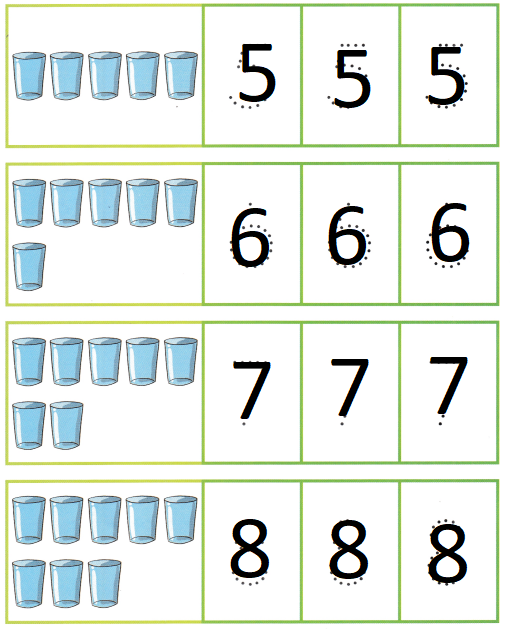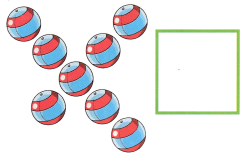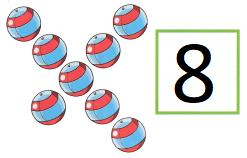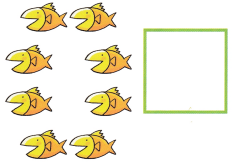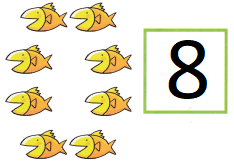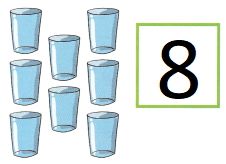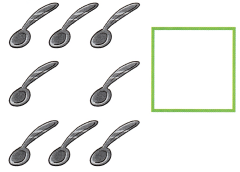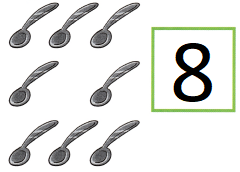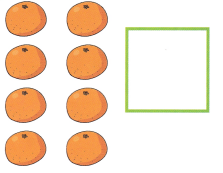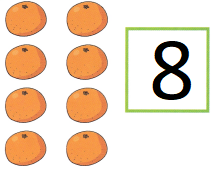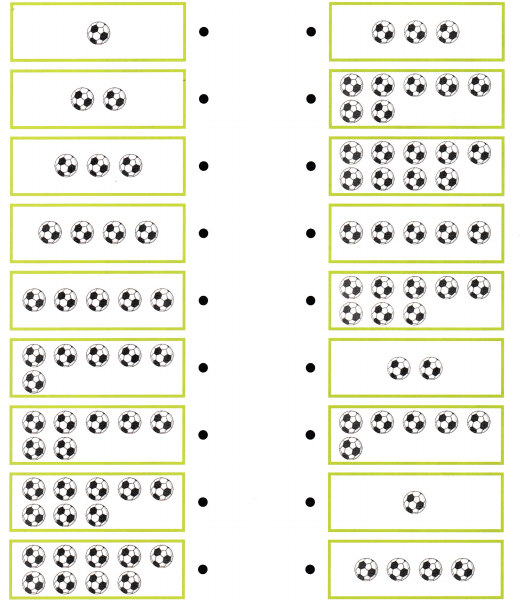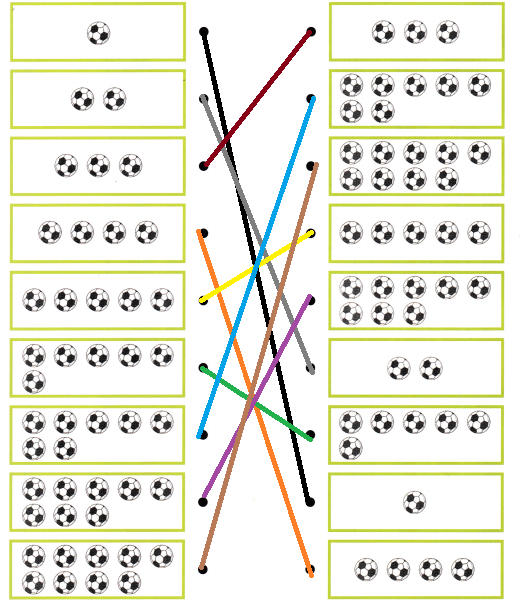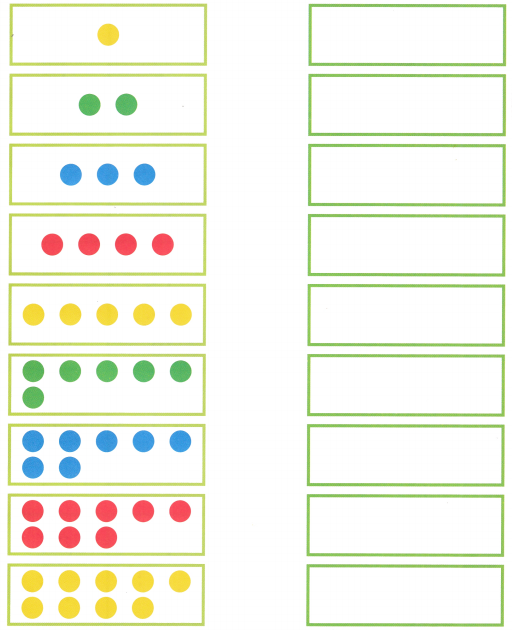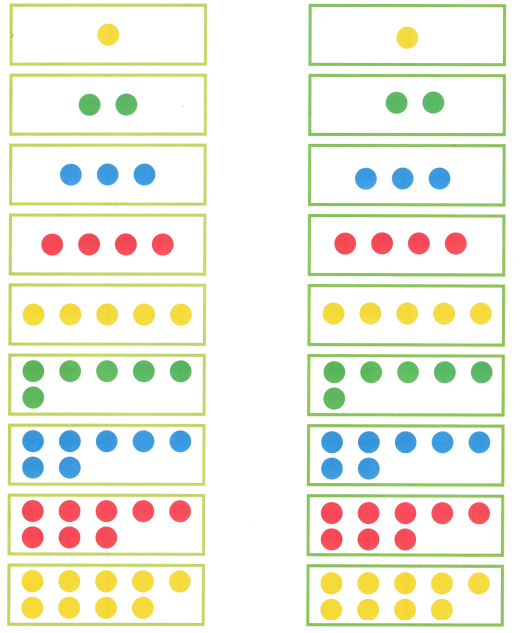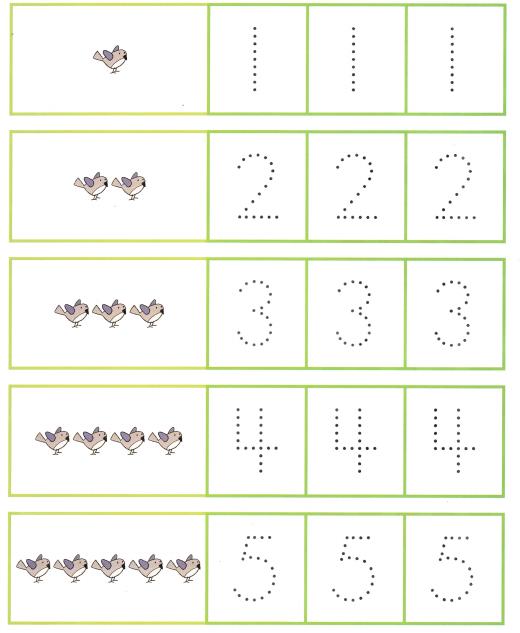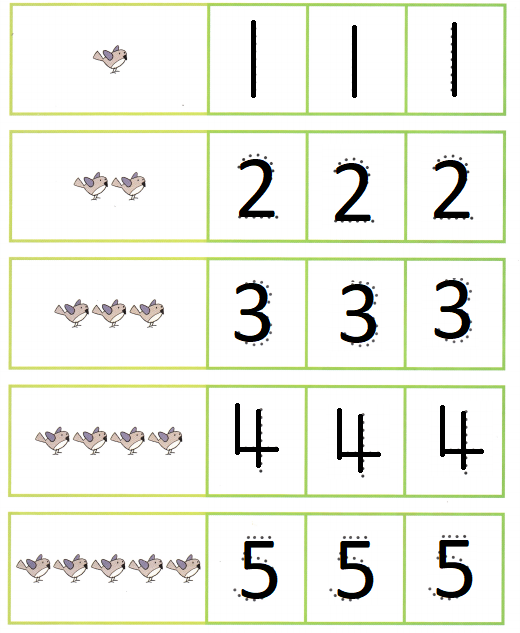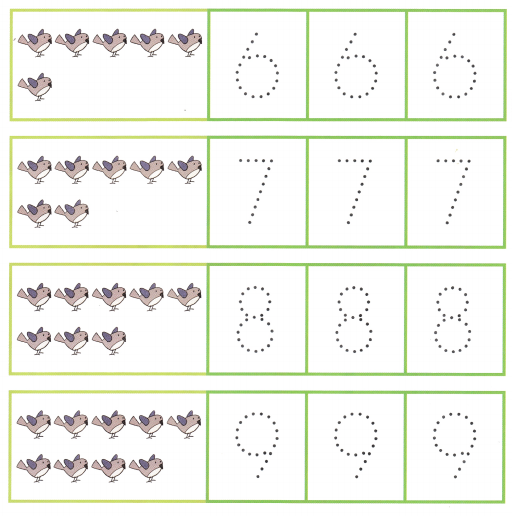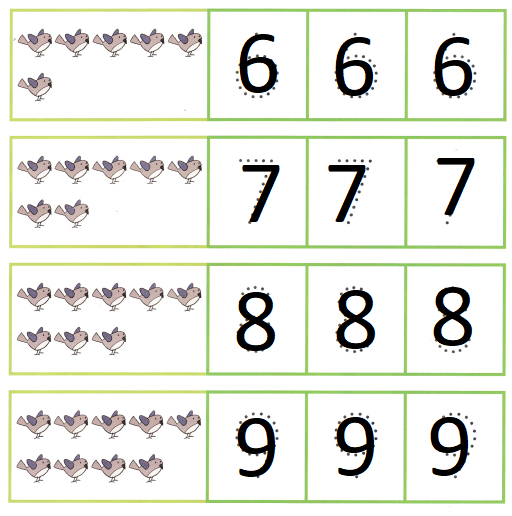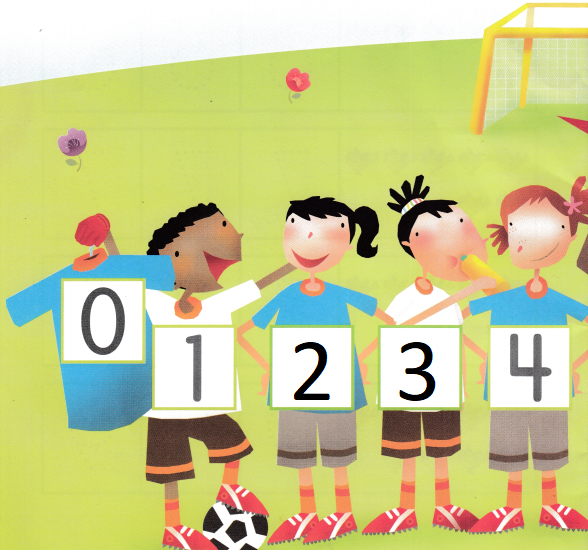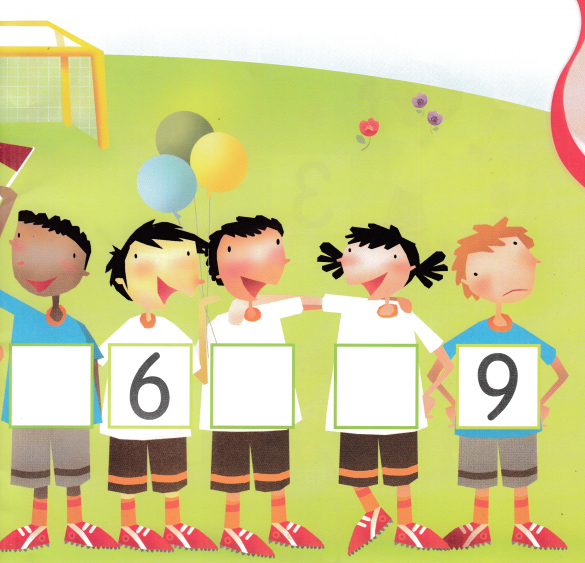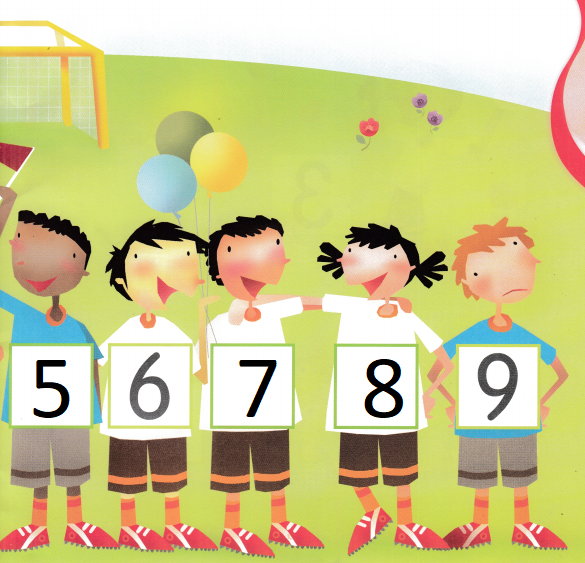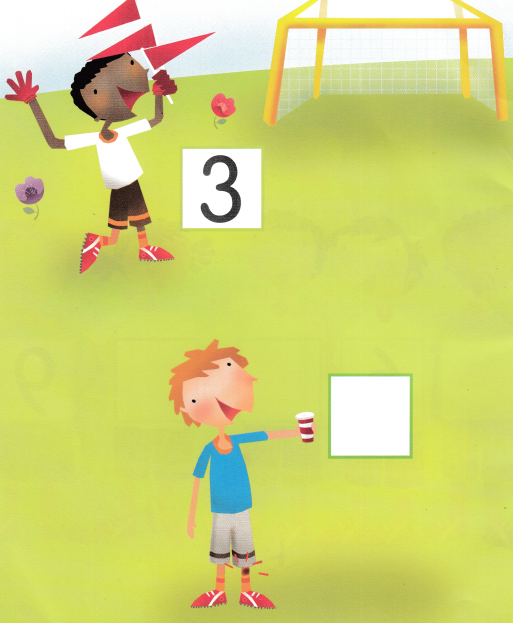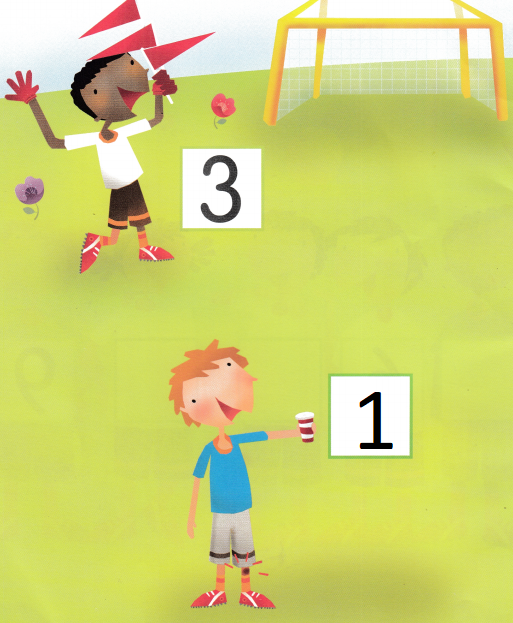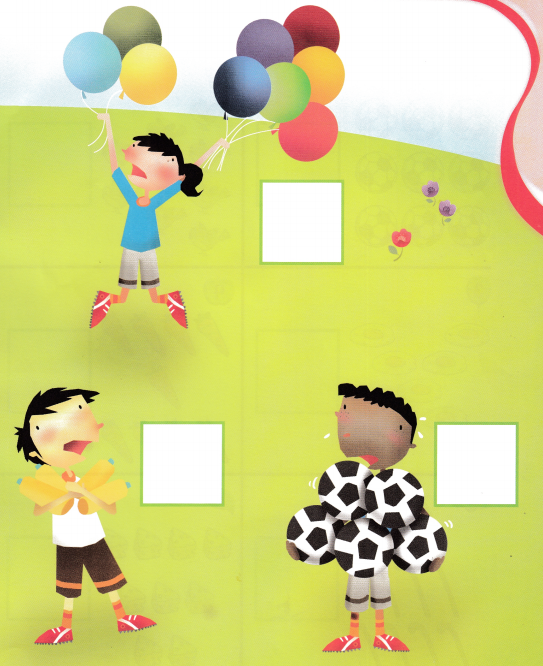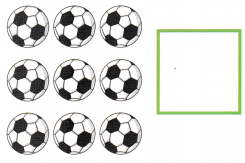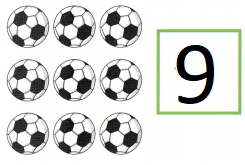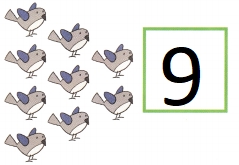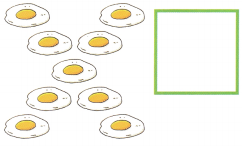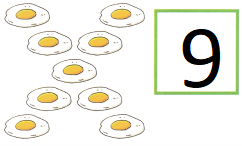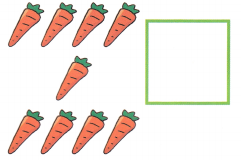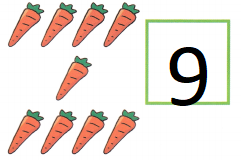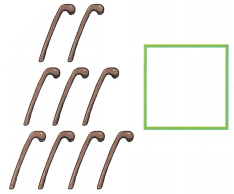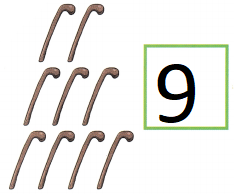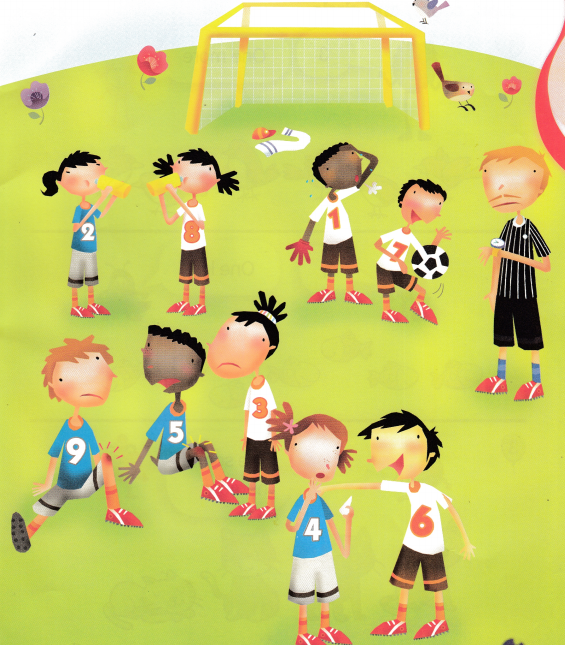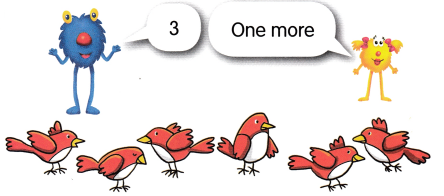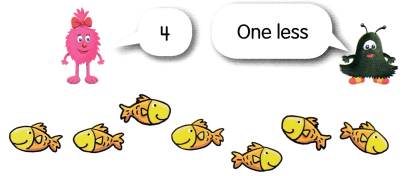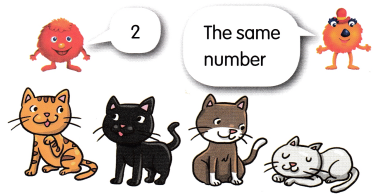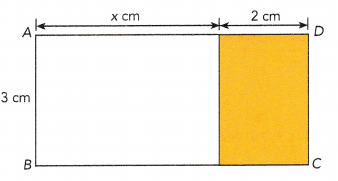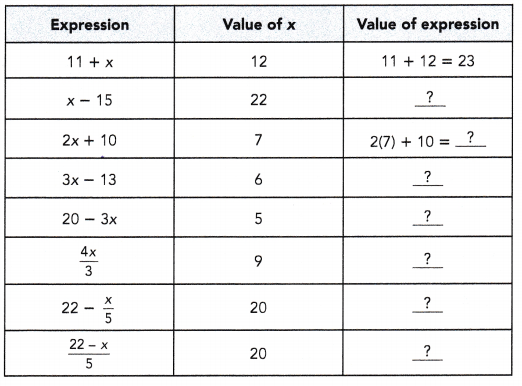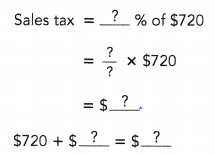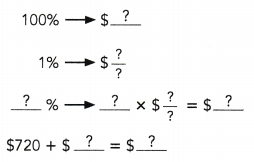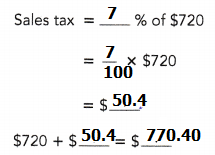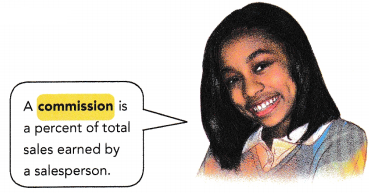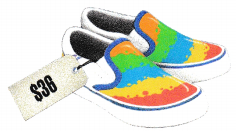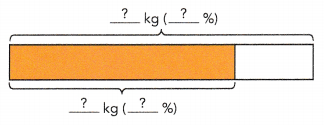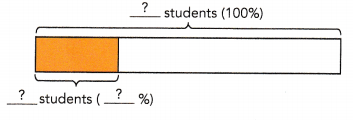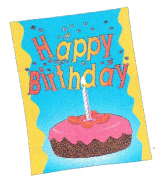Practice the problems of Math in Focus Grade 6 Workbook Answer Key Cumulative Review Chapters 4-7 to score better marks in the exam.
Math in Focus Grade 6 Course 1 A Cumulative Review Chapters 4-7 Answer Key
Concepts and Skills
Write each ratio in simplest form. (Lesson 4.2)
Question 1.
12 : 28
Answer:
4 : 7
Explanation:
To find the simplest form of ratios we can use,
prime factor method or greatest common factor method.
12 : 28
common factor for both the numbers is 3
so, divided both sides with 3
12 : 28 = 4 : 7
Question 2.
32 : 18
Answer:
16 : 9
Explanation:
To find the simplest form of ratios we can use,
prime factor method or greatest common factor method.
32 : 18
common factor for both the numbers is 2
so, divided both sides with 2
32 : 18 = 16 : 9
Question 3.
36 : 81
Answer:
4 : 9
Explanation:
To find the simplest form of ratios we can use,
prime factor method or greatest common factor method.
36 : 81
common factor for both the numbers is 9
so, divided both sides with 9
36 : 81 = 4 : 9
Question 4.
64 : 40
Answer:
8 : 5
Explanation:
To find the simplest form of ratios we can use,
prime factor method or greatest common factor method.
64 : 40
common factor for both the numbers is 8
so, divided both sides with 8
64 : 40 = 8 : 5
Find the missing term in each pair of equivalent ratios. (Lesson 4.2)
Question 5.
35 : 25 =  : 5
: 5
Answer:
Missing term is 7
Explanation:
product of extremes = product of means
a:b = c:d
ab = cd
ad = bc
a = 35, b = 25, c = x, d = 5
35 x 5 = 25x
25x = 175
x = 175 ÷ 25
x = 7
Question 6.
48 : 33 = 16 : 
Answer:
Missing term is 11
Explanation:
product of extremes = product of means
a:b = c:d
ab = cd
ad = bc
a = 48, b = 33, c = 16, d = x
48x = 33 x 16
48x = 528
x = 528 ÷ 48
x = 11
Question 7.
18 :  = 9 : 12
= 9 : 12
Answer:
Missing term is 24
Explanation:
product of extremes = product of means
a:b = c:d
ab = cd
ad = bc
a = 18, b = x, c = 9, d = 12
18 x 12 = 9x
9x = 216
x = 216 ÷ 9
x = 24
Question 8.
 : 24 = 21 : 14
: 24 = 21 : 14
Answer:
Missing term is 36
Explanation:
product of extremes = product of means
a:b = c:d
ab = cd
ad = bc
a = x, b = 24, c = 21, d = 14
14x = 24 x 21
14x = 504
x = 504 ÷ 14
x = 36
Express each percent as a fraction in simplest form. (Lesson 6.1)
Question 9.
58%
Answer:
= \(\frac{29}{50}\)
Explanation:
= \(\frac{58}{100}\)
= \(\frac{29}{50}\)
Question 10.
24\(\frac{1}{3}\)%
Answer:
2433.33
Explanation:
24 \(\frac{1}{3}\) x 100
= \(\frac{73}{3}\) x 100
= \(\frac{73 x 100}{3}\)
= \(\frac{7300}{3}\)
= 2433.33
Question 11.
9.4%
Answer:
\(\frac{29}{50}\)
Explanation:
9.4% = \(\frac{9.4}{100}\)
multiply the numerator and denominator with 10,
as numerator has decimal
= \(\frac{94}{1000}\)
Divided numerator and denominator with 2
= \(\frac{47}{500}\)
Express each percent as a decimal. (Lesson 6.1)
Question 12.
37%
Answer:
0.37
Explanation:
37% = \(\frac{37}{100}\)
= 0.37
Question 13.
67%
Answer:
0.67
Explanation:
67% = \(\frac{67}{100}\)
= 0.67
Question 14.
8.9%
Answer:
0.089
Explanation:
8.9% = \(\frac{8.9}{100}\)
= 0.089
Express each fraction as a percent. (Lesson 6.2)
Question 15.
\(\frac{19}{20}\)
Answer:
95%
Explanation:
\(\frac{19}{20}\)
= \(\frac{19}{20}\) × 100%
= \(\frac{1900}{20}\) %
= 95%
Question 16.
\(\frac{23}{25}\)
Answer:
92%
Explanation:
\(\frac{23}{25}\)
= \(\frac{23}{25}\) × 100%
= \(\frac{2300}{25}\) %
= 92%
Question 17.
\(\frac{360}{400}\)
Answer:
90%
Explanation:
\(\frac{360}{400}\)
= \(\frac{360}{400}\) × 100%
= \(\frac{36000}{400}\) %
= 90%
Express each decimal as a percent. (Lesson 6.2)
Question 18.
0.07
Answer:
7%
Explanation:
Express 0.04 as a percent.
Converting from a decimal to a percentage is done by multiplying the decimal value by 100 and adding %.
0.07 = \(\frac{7}{100}\)
= 0.07 x 100 = 7
Question 19.
0.62
Answer:
62%
Explanation:
Express 0.62 as a percent.
Converting from a decimal to a percentage is done by multiplying the decimal value by 100 and adding %.
0.62= \(\frac{62}{100}\)
= 0.62 x 100
= 62
Question 20.
0.8
Answer:
80%
Explanation:
Express 0.8 as a percent.
Converting from a decimal to a percentage is done by multiplying the decimal value by 100 and adding %.
0.8 = \(\frac{8}{100}\)
= 0.8 x 100
= 80
Find the quantity represented by each percent. (Lesson 6.3)
Question 21.
55% of 600 liters
Answer:
330 liters
Explanation:
55% of 600 liters
= \(\frac{55}{100}\) × 600
= 330
66% of 740 is 330.
Question 22.
73% of $3,900
Answer:
$2,847
Explanation:
73% of $3,900
= \(\frac{73}{100}\) × 3,900
= 2,847
73% of 740 is $2,847.
Write an algebraic expression for each of the following. (Lesson 7.1)
Question 23.
A number that is 7 more than 3 times x
Answer:
3x + 7
Explanation:
x + 7 is an algebraic expression in terms of x.
x and 7 are the terms of expression.
A number that is 7 more than 3 times x
3x + 7
Question 24.
The total cost, in cents, of 8 apples and 9 oranges if each apple costs 2y cents and each orange costs 3y cents
Answer:
43y cents
Explanation:
each apple costs 2y cents
each orange costs 3y cents
8 x 2y + 9 x 3y
= 16y + 27y
= 43y
Question 25.
The perimeter of a rectangle whose sides are of lengths (4z + 3) units and (3z + 5) units
Answer:
14z + 16 units
Explanation:
The perimeter of a rectangle = 2(Length + Breadth)
= 2 ( (4z + 3) + (3z + 5))
= 2 (4z + 3z + 3 + 5)
= 2 (7z + 8)
= 14z + 16
Evaluate each expression for the given value of the variable. (Lesson 7.2)
Question 26.
4(x + 5) – \(\frac{2x}{3}\) when x = 6
Answer:
40
Explanation:
by substituting x value = 6 in the given algebraic equation
4(x + 5) – \(\frac{2x}{3}\)
= 4(6 + 5) – \(\frac{2 x 6}{3}\)
= (24 + 20) – \(\frac{12}{3}\)
= 44 – \(\frac{12}{3}\)
= (132 – 12) ÷ 3
= 120 ÷ 3
= 40
Question 27.
\(\frac{6 y+7}{3}\) + \(\frac{3 y+4}{4}\) when y = 8
Answer:
\(\frac{152}{6}\) or 25.33
Explanation:
\(\frac{6 y+7}{3}\) + \(\frac{3 y+4}{4}\) when y = 8
= \(\frac{6 x 8+7}{3}\) + \(\frac{3 x 8+4}{4}\)
= \(\frac{48+7}{3}\) + \(\frac{24+4}{4}\)
= \(\frac{55}{3}\) + \(\frac{28}{4}\)
= \(\frac{304}{12}\)
= \(\frac{152}{6}\) or 25.33
Simplify each expression. (Lesson 7.3)
Question 28.
36a + 12 – 6a – 7
Answer:
30a + 5
Explanation:
36a + 12 – 6a – 7
= 36a – 6a + 12 – 7
= 30a + 5
Question 29.
21 + 34b – 8 – 5b + 8 + 23b
Answer:
Explanation:
21 + 34b – 8 – 5b + 8 + 23b
= 21 – 8 + 8 + 34b – 5b + 23b
= 21 + 52b
Expand each expression. (Lesson 7.4)
Question 30.
6(m + 4) + 3(m + 9)
Answer:
9m + 51
Explanation:
6(m + 4) + 3(m + 9)
= 6m + 24 + 3m + 27
= 9m + 51
Question 31.
8(n + 4) + 5(6 + n)
Answer:
13n + 62
Explanation:
8(n + 4) + 5(6 + n)
= 8n + 32 + 30 + 5n
= 13n + 62
Factor each expression. (Lesson 7.4)
Question 32.
6a – 42
Answer:
6(a – 7)
Explanation:
6a – 42
In the above expression 6 is a common factor
= 6(a – 7)
Question 33.
56 – 8b
Answer:
8(7 – b)
Explanation:
56 – 8b
In the above expression 8 is a common factor
= 8(7 – b)
Question 34.
23c + 37 – 5c + 8
Answer:
9(2c + 5)
Explanation:
23c + 37 – 5c + 8
= 23c – 5c + 37 + 8
= 18c + 45
= 9(2c + 5)
Question 35.
58 + 40d – 9 – 19d
Answer:
7(7 – 4d)
Explanation:
58 + 40d – 9 – 19d
= 58 – 9 + 40d – 19d
= 49 – 28d
= 7(7 – 4d)
Problem Solving
Solve. Show your work.
Question 36.
A factory produces 550 bottles of water in 25 minutes. How many bottles can it produce in 3 minutes? (Chapter 5)
Answer:
66 water bottles
Explanation:
A factory produces 550 bottles of water in 25 minutes.
Number of bottles can it produce in 3 minutes
= (550 x 3) ÷ 25
= 1650 ÷ 25 = 66
Question 37.
A machine can stamp 75 caps per minute. At this rate, how long will it take to stamp 3,000 caps? (Chapter 5)
Answer:
40 minutes
Explanation:
A machine can stamp 75 caps per minute
At this rate, how long will it take to stamp 3,000 caps
= 3000 ÷ 75
= 40 minutes
Question 38.
There were 65 students in the hall. 80% of them were girls. How many girls were in the hall? (Chapter 6)
Answer:
52 girls
Explanation:
There were 65 students in the hall.
80% of them were girls.
Number of girls in the hall
= 80% 0f 65
= \(\frac{80}{100}\) X 65
= \(\frac{5200}{100}\)
= 52
Question 39.
Kenneth had $1,800. He spent 34% of it on a watch. How much did he pay for the watch? (Chapter 6)
Answer:
$612
Explanation:
Kenneth had $1,800.
He spent 34% of it on a watch.
Amount he paid for the watch
= 34% 0f 1800
= \(\frac{34}{100}\) X 1800
= 34 X 18 = 612
Question 40.
28% of a number is 168. Find the number. (Chapter 6)
Answer:
number is 200
Explanation:
28% of a number is 168
28% of x = 168
\(\frac{28}{100}\)x = 168
\(\frac{28x}{100}\) = 168
28x = 168 x 100
28x = 16800
x = 16800 ÷ 28
x = 600
Question 41.
140% of a number is 364. Find the number. (Chapter 6)
Answer:
number is 260
Explanation:
140% of a number is 364
140% of x = 364
\(\frac{140}{100}\)x = 364
\(\frac{140x}{100}\) = 364
140x = 364 x 100
140x = 36400
x = 36400 ÷ 140
x = 260
Question 42.
Of the 90 students who sat for a test, 24 students passed. Find the ratio of the number of students who passed the test to the number of students who did not. Give your answer in simplest form. (Chapter 4)
Answer:
4 : 11
Explanation:
Of the 90 students who sat for a test, 24 students passed.
passed = 90 – 24 = 66
So, the ratio of the number of students who passed the test to the number of students who did not.
24 : 66 = 4 : 11
Question 43.
On Saturday, Aaron spent $108. On Sunday, he spent $54 more than what he spent on Saturday. Find the ratio of Aaron’s spending on Saturday to his spending on both Saturday and Sunday. Give your answer in simplest form. (Chapter 4)
Answer:
2 : 3
Explanation:
On Saturday, Aaron spent $108.
On Sunday, he spent $54 more than what he spent on Saturday.
$108 + $54 = $162
So, the ratio of Aaron’s spending on Saturday to his spending on both Saturday and Sunday.
108 : 162 = 2 : 3
Question 44.
A dalmatian weighs 72 pounds. A bullmastiff is 24 pounds heavier than the dalmatian. A bulldog is 12 pounds lighter than the bullmastiff. Find the ratio of the bulldog’s weight to the dalmatian’s weight. Give your answer in simplest form. (Chapter 4)
Answer:
7 : 6
Explanation:
A dalmatian weighs 72 pounds.
A bullmastiff is 24 pounds heavier than the dalmatian.
72 pounds + 24 pounds = 96 pounds
A bulldog is 12 pounds lighter than the bullmastiff.
96 pounds – 12 pounds = 84
The ratio of the bulldog’s weight to the dalmatian’s weight.
84 : 72 = 7 : 6
Question 45.
The ratio of the number of left-handers to the number of right-handers in a middle school is 6 : 15. If there are 120 left-handers, how many right-handers are there? (Chapter 4)
Answer:
300 right-handers
Explanation:
The ratio of the number of left-handers to the number of right-handers in a middle school is 6 : 15.
If there are 120 left-handers,
then how many right-handers are there
6 : 15 :: 120 : x
product of extremes = product of means
a:b = c:d
\(\frac{a}{b}\) = \(\frac{c}{d}\)
ad = bc
a = 6, b = 15, c = 120, d = x
6x = 15 x 120
4x = 1800
x = \(\frac{1800}{6}\)
x = 300
Question 46.
Mrs. Jackson gave a sum of money to her son and daughter in the ratio 8 : 9. Her daughter received $3,060. How much did Mrs. Jackson give to her two children in all? (Chapter 4)
Answer:
$5,780
Explanation:
Mrs. Jackson gave a sum of money to her son and daughter in the ratio 8 : 9.
Her daughter received $3,060.
Her son received
8 : 9 = 3060 : x
\(\frac{8}{9}\) = 3060
9x = 3060 x 8
x = 24480 ÷ 9
x = 2720
Total amount Mrs. Jackson give to her two children in all
= 3060 + 2720
= 5780
Question 47.
The ratio of the number of boys to the number of girls in a school is 7 : 9. If there are 1,248 students in the school, how many girls are there? (Chapter 4)
Answer:
702 girls
The ratio of the number of boys to the number of girls in a school is 7 : 9.
If there are 1,248 students in the school,
Let the number of boys be 7x and girls be 9x
Total number of students = 7x + 9x = 1248
=> 16x = 1248
x = 1248 ÷ 16
x = 78
Number of girls = 9x
= 9 x 78 = 702
Question 48.
A sum of money was shared among Daniel, Elliot, and Frank in the ratio 5 : 7 : 8. If Frank’s share was $2,781 more than Daniel’s share, what was the original sum of money shared among the three men? (Chapter 4)
Answer:
$18540
Explanation:
Let 5x = Daniel’s share
7x = Elliot’s share
8x = Frank’s share
8x = 5x + 2781
3x = 2781
x = 927
Daniel’s share = 5x
= 5 × 927 = $4635
Elliot’s share = 7x
= 7 × 927 = $6489
Frank’s share = 8x
= 8 × 927 = $7416
Amount shared among all = 4635 + 6489 + 7416 = $18540
Question 49.
A tank is filled with water at a rate of 2.4 liters per minute. At this rate, how long will it take to fill the tank with 84 liters of water? (Chapter 5)
Answer:
35 minutes
Explanation:
A tank is filled with water at a rate of 2.4 liters per minute.
At this rate, how long will it take to fill the tank with 84 liters of water
1 min = 2.4 L
84 L = x
x = 84 ÷ 2.4
x = 35min
Question 50.
A farmer uses 920 grams of grains to feed 8 chickens. (Chapter 5)
a) At this rate, how many grams of grains does he use to feed 100 chickens?
Answer:
11500 grams
Explanation:
number of grams used to feed 8 chickens = 920g
number of grams used to feed 1 chicken = 920 ÷ 8 = 115g
number of grams used to feed 100 chickens = 100 × grams used for 1 chicken
= 100 × 115 = 11500g
b) At this rate, how many chickens can he feed using 48.3 kilograms of grains?
Answer:
420 chickens
Explanation:
Grams used = 48.3 × 1000 = 48300g
1kg = 1000g
number of grams used to feed 1 chicken = 115g
number of chickens = grams used ÷ number of grams used to feed 1 chicken
= 48300 ÷ 115
= 420 chickens
Question 51.
The distance between School A and School B is 360 kilometers. (Chapter 5)
a) If a bus leaves School A at 9:30 A.M. and reaches School B at 2:30 P.M., what is its speed in kilometers per hour?
Answer:
A to B = 360Km
Explanation:
start time at A 9:30 AM
reaching time at B 2:30 PM
the difference = 5Hours
Speed = \(\frac{Distance}{Time}\)
= \(\frac{360}{5}\)
= 72 kilometers per hour
b) If a car travels at a speed of 80 kilometers per hour, how long will it take to travel from School A to School B?
Answer:
400 kilometer
Explanation:
start time at A 9:30 AM
reaching time at B 2:30 PM
speed of car is 80kilometer per hour
Speed = \(\frac{Distance}{Time}\)
80 = \(\frac{Distance}{5}\)
80 × 5 = Distance
Distance travels by a car = 400 kilometers
Question 52.
A truck traveled from Town A to Town B, and then to Town C. The truck took 3 hours to travel from Town A to Town B at an average speed of 42 kilometers per hour. It then traveled from Town B to Town C at an average speed of 68 kilometers per hour. The truck took a total of 5 hours to travel from Town A to Town C. (Chapter 5)
a) What is the distance between Town A and Town B?
Answer:
126km
Explanation:
Town A to Town B
time = 3hours and (speed = 42 kmph)
the distance between Town A and Town B
Distance = Speed x time
= 42 × 3
= 126 kilometers
the distance between Town A and Town B is 126 km
b) What was average speed of the truck for the whole journey?
Answer:
55 kilometers per hour
Explanation:
(42 + 68)/2
= 110/2
= 55 kilometers per hour
Question 53.
Russell bought a CD player that cost $120 before it went on sale for a 15% discount. If he paid 5% sales tax on the sale price, how much did Russell pay for the CD player? (Chapter 6)
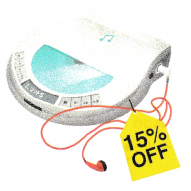
Answer:
$107.10
Explanation:
Russell bought a CD player that cost $120,
before it went on sale for a 15% discount.
If he paid 5% sales tax on the sale price, how much did Russell pay for the CD player
(120 × 15)/100
= 18
= 120 – 18
= 102
= (102 × 5)/100
= 510/100
= 5.1
Russell pay for the CD player
= $102 + $5.1
= $107.10
Question 54.
Last year, Jane had $2,800 in her bank account. This year, her savings increased by 4.5%. $he plans to increase her savings by 5% next year. How much will Jane have in her account after the two-year period? (Chapter 6)
Answer:
$3,072.30
Explanation:
Jane had $2,800 in her bank account.
(2,800 × 4.5)/100
=12,600/100
=126
2,800 + 126 = 2,926
= (2,926 × 5 )/100
= 14,630/100
= 146.3
2926 + 146.3
= 3,072.3
Question 55.
Two jackets were on sale. The first jacket cost $239 and was marked down 40%. The second jacket cost $159 and was given a 20% discount. Which of the two jackets cost less during the sale? Justify your reasoning. (Chapter 6)
Answer:
Second jacket
Explanation:
The first jacket cost $239 and was marked down 40%.
100 – 40 = 60%
60% of 239
(60 ÷ 100) × 239 = 143.40
The second jacket cost $159 and was given a 20% discount
100 – 20 = 80%
80% of 159
(80 ÷ 100) × 159 = 127.20
By compare the price of both the jackets,
second jacket price is less than the first one.
Question 56.
One year, the price of a motorcycle was $3,000. It increased to $3,550 another year. What is the percent increase in its price? Round your answer to 2 decimal places. (Chapter 6)
Answer:
18.33 or 18%
Explanation:
the price of a motorcycle was $3,000.
It increased to $3,550 another year.
the price in second year increased = 3550 – 3000 = 550
the percent increase in its price
1 – (3550 ÷ 3000)
= 1 – 1.1833
= 1833 ÷ 100 = 18.33
Question 57.
Leonard has 5 times as many stamps as Alison. Melissa has 7 more stamps than Leonard. If Alison has q stamps, how many stamps does Melissa have? (Chapter 7)
Answer:
5q + 7 stamps
Explanation:
A ⇒ q
L ⇒ 5q
M ⇒5q + 7
Melissa have 5q + 7 stamps
Question 58.
Tim is k years old and Jennifer is 4 years younger than Tim. Find their average age in 3k years’ time, in terms of k. (Chapter 7)
Answer:
(4k – 2) years
Explanation:
Tim k years
Jennifer is k – 4
average age in 3k years
= (k + 3k +k – 4 + 3k)/2
= 8k – 4/2
= 2(4k – 2)/2
= 4k – 2
Question 59.
The length of a rectangular garden is 7 meters longer than its width. If its perimeter is (12x + 14) meters, find its length in terms of x. (Chapter 7)
Answer:
(3x + 7)m
Explanation:
Perimeter of rectangle = 2 (length +width)
12x + 14 = 2 (x + 7 + x)
Perimeter = 2 width + 2 length
12x + 14 = 2 length + 2x
12x – 2x + 14 = 2 length
10x + 14 = 2 length
length = 2(5x+ 7)/2
= 5x+7
Question 60.
A cupboard weighs (5y + 6) pounds more than a table. 3 cupboards and 4 tables weigh (29y + 18) pounds in all. (Chapter 7)
a) Find the weight of the table in terms of y.
Answer:
2y lb
Explanation:
29y + 18 = 3 cupboards + 4 tables
29y + 18 = 3[( 5y + 6 ) + table] + 4 tables
29y + 18 =15y + 18 + 3 tables + 4 tables
29y – 15y +18 – 18 = 7 tables
14y = 7 tables
table = 2y
b) If y = 15, find the total weight of 2 cupboards and 3 tables.
Answer:
312 lb
Explanation:
y = 15
2[( 5y + 6 ) + table] + 3 tables
2[( 5y + 6 ) + 2y] + 3 × 2y
for y = 15
10y + 12 + 4y + 6y
20y +12
= 20(15) + 12
= 300 + 12
= 312 lbs
Question 61.
A factory can produce 45 containers of yogurt in t minutes. 950 grams of fruit are used for every 25 containers of yogurt. (Chapters 5, 7)
a) Find, in terms of t, the number of containers of yogurt that the factory can produce in 5 minutes.
Answer:
\(\frac{225}{t}\) containers
Explanation:
45 containers in t minutes,
950 grams of fruit are used for every 25 containers of yogurt.
(45 × 5) ÷ t
= \(\frac{225}{t}\)min
b) Find, in terms of t, the time taken by the factory to produce 100 containers of yogurt.
Answer:
\(\frac{20}{9}\)min or 2.22min
Explanation:
45 containers in t minutes,
time taken for 100 containers
Time = (100 containers ÷ 45 containers) × t
= \(\frac{20}{9}\)min or 2.22min
c) If t = 6, find the amount of fruit used in producing containers of yogurt in 8 minutes.
Answer:
2,280 grams
Explanation:
If t = 6min
45 containers in 6min
In 8 min number of containers produced
(45/6min) × 8min = 60 Containers.
the amount of fruit used in producing containers of yogurt in 8 minutes
=(950grams/25cont) × 60 = 2280 Grams
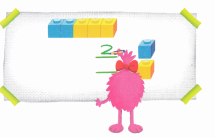
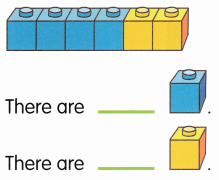
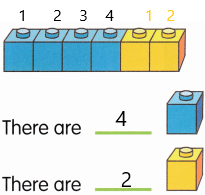
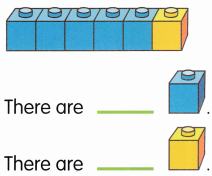
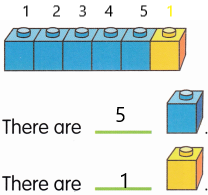
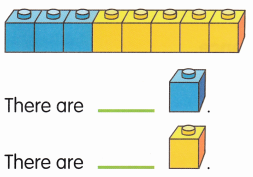
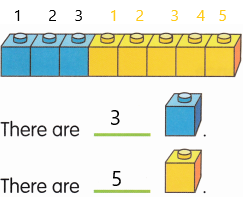
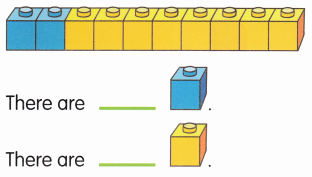
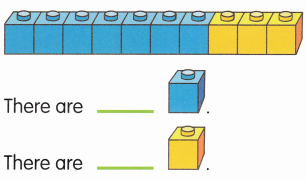
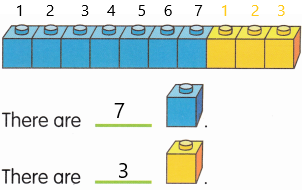
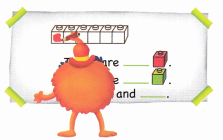
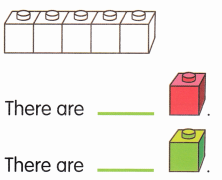
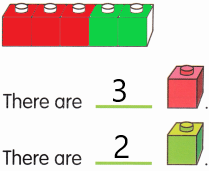
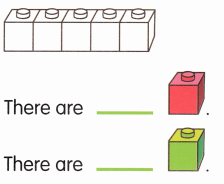
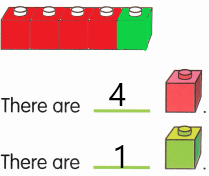
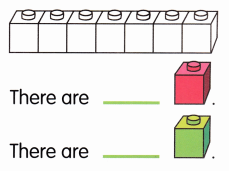
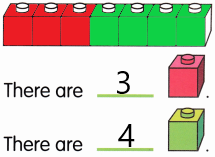
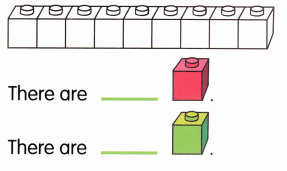
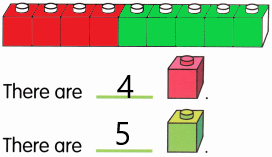
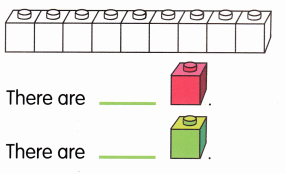
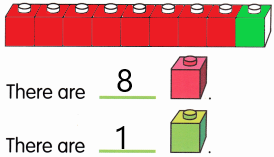
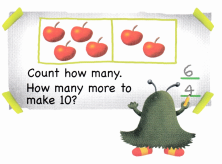

















![]() . Write the number sentence.
. Write the number sentence.